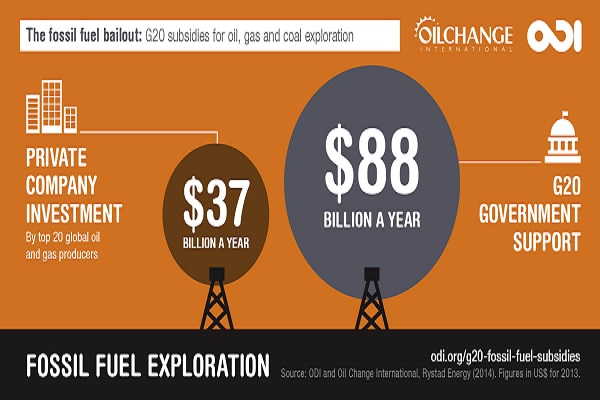Energy subsidies, which have mostly supported fossil fuels and nuclear power over the previous half century, have historically kept energy prices artificially low, compared to market rates. But they come at a high cost to governments and taxpayers. The Indian government, for example, spends as much as it does on fuel subsidies for kerosene and liquid propane, used to light rural houses, as it does on education.
India subsidies fossil energy consumption by $21 billion every year, which works out at $16 per person. Given that 500 million of its people live on less than $2 per day, this is a surprisingly large amount.
Such costs aren’t benefiting the poorest households, meant to the key beneficiaries of the subsidies, because they have less money to spend on fuel and electricity in the first place. Of the tens of billions spent on fossil fuel subsidies in India in 2010, for example, less than $2 billion benefited the poorest 20% of the population.
Instead, the subsidies benefited wealthier households, which consume around 20 times more energy services than their poorer counterparts. They also tend to benefit energy companies and equipment suppliers.
Practically every energy system has been subsidised at some point. This results in budget deficits and higher taxes which potentially could have been spent more effectively elsewhere. If the world’s projected $1.9 trillion in energy subsidies were repealed tomorrow, that would provide enough money to eliminate worldwide hunger and malnutrition one hundred times over.
Environmentally, energy subsidies tend to have “substantial carbon footprints” because they tend to favour fossil fuels, such as coal and petroleum. As subsidies lower the price of electricity and fuel, they generally lead to higher levels of consumption. They also generally diminish efforts to promote energy efficiency or to conserve energy.
This is why the negative impacts of subsidies need to be better understood. Below are key elements listed in the paper to be improved or reformed so subsidies can better benefit societies and the environment.
Impact studies
The new paper calls for more transparent, complete and comparable data on the impact of subsidies to help bring about further independent analysis. These impact studies could help governments and communities better determine the costs and benefits of particular subsidies, and decide which ones need revising or repealing.
Sunset clauses
Once governments adopt subsidies they tend to become self-replicating with expenditure tending to operate, maintain and improve existing technologies. Adding sunset clauses can put an end to this. By setting an expiration date, subsidies can’t operate indefinitely.
Managing the risks
A review of 22 case studies of subsidy reform by the IMF found that only 12 didn’t cause major economic or social disruption. Subsidy reforms should aim to ensure that the poorest in society don’t lose out from the removal of the subsidies. Adjustment packages targeting those likely to be hit hardest can help. The paper also calls for more research on the political economy dimensions to subsidy reform.
Reference(s):
1. Publication: Benjamin K. Sovacool. Reviewing, Reforming, and Rethinking Global Energy Subsidies: Towards a Political Economy Research Agenda. Ecological Economics, 2017
2. Research story: University of Sussex | March 13, 2017 (source)














Comments